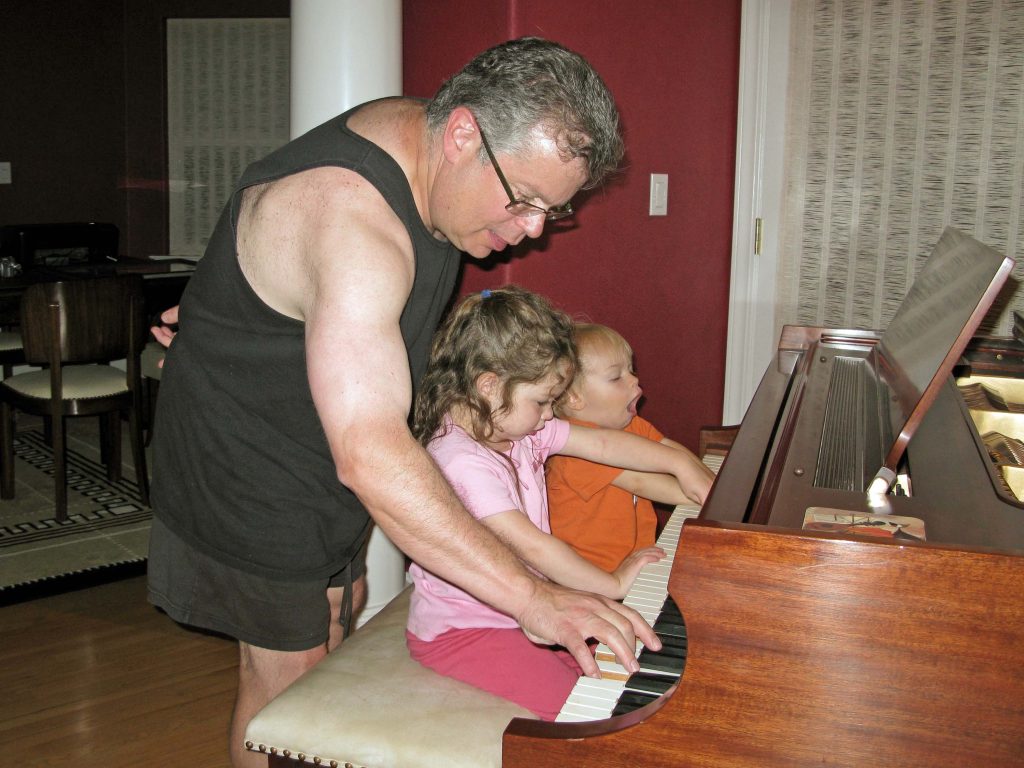The standard repertoire of “Concert Music” is music written primarily by dead Euro-males between roughly 1650 and 1900, music typically heard in the rather formal environs of a concert hall. Yes, this music is often referred to as “classical music”, which is as useless a phrase as “real imitation margarine!” When we call something “classic”, we are identifying it with the ideals and restraint of ancient Greek art, which immediately rules out the great bulk of concert music, which as- often-as-not is filled with schmerz und schmutz, sturm und drang, angst and exaltation. Even if we use the word “classic” in its loosest permutation – to indicate something exemplary – who’s to say that the phrase “classical music” shouldn’t apply equally to “Classic Jazz”, “Classic Rock” – and even, painful though it may be to contemplate, “Classic Death Metal/Grindcore”. So: a pox on the phrase “classical music”. Concert music it is.
And why should we want to introduce our children to concert music? Because it constitutes some of the greatest art our species has ever cooked up, musical art that informs, edifies, educates, entertains, inspires, and ultimately packs a toy shop’s worth of joy that will stick with them for the rest of their lives.
1. It is a truism that children will read if they are read to and if they see their parents read. It is incumbent upon parents to set an example by listening to concert music at home and in the car (the latter might require some negotiation, but it is my experience that it CAN BE DONE). Don’t be afraid of playing the same piece over and over again; familiarity breeds affection.
(Having said all this, I would suggest that parents do not play their children just one type of music to the exclusion of all others. The distinctions we have created between “concert music” and “rock ‘n’ roll”, and “jazz” and so forth are on the whole meaningless to children. They tend to just like music – all music – which is how it should be.)
2. Invest in some decent percussion toys and encourage your kids to “play along” with recordings and videos. Yes, I’m aware that this can drive an adult up a wall, which is why we should do it with them. This makes us active, not passive participants in the musical process, and it’s more fun than you might think. As for “insulting” Bach or Mozart or Beethoven by doing this; my friends, they’re dead and beyond insult. Besides, do you really think playing along with a recording is more insulting than the disco arrangement of Beethoven’s Fifth Symphony that was featured in the movie Saturday Night Fever? I rest my case.
3. Rent/buy/download and play cool movies like “Beethoven Lives Upstairs”, “Mr. Bach Comes to Call”, Disney’s “Peter and the Wolf” and “Fantasia 2000”. Each episode of Disney Junior’s “Little Einsteins” series focuses on a different piece of concert music and teaches all sorts of musical terminology as well. My three year-old son and five year-old daughter love them.
4. Go to local orchestral concerts TOGETHER, in particular children’s/family concerts. Outdoor festival concerts are even better, because the kids can run around and move to the music. Try to listen to the pieces on the program before hand. Music literacy is akin to written literacy, and a little (even a tiny!) bit of preparation pays off big time in terms of intensifying the experience.
5. Get a piano. It doesn’t have to be an 8’11¾” Steinway “D” (list price around 130k); a little spinet will do. Put it in a place where the kids can bang on it without making the rest of the family crazy. When it’s time for piano lessons (at age 6 or 7; no need to rush) the piano will thus be an old friend and not a new torture device. And speaking of lessons: no one is ever too old to take piano lessons. Mom or dad (or grandma or grandpa, whomever) should think about taking lessons and practicing together with the kids. It is – seriously – a bonding experience like no other.
(For our information: a “piano” is made out of wood, medal, leather and felt. It breathes. It is real. Its mechanism physically follows the will of the player’s body. An electric keyboard is made out of plastic and circuitry. It is not real. It does not breath. It has no place in your house or apartment. “But it makes so many different sounds!” So does a cat in a microwave: does sonic variety justify popping little Boots into the micro? “But we don’t have room for a piano.” Yes you do. “But my child can practice on a keyboard wearing earphones, so we don’t have to listen”. Oh, that’s a GREAT message to send your child: go practice, but don’t make us listen to you. “But pianos have to be tuned.” So?)
Recording starter kit. Here are some great works wonderfully performed to start out with.
Johann Sebastian Bach, Brandenburg Concertos; Trevor Pinnock conducting, on Archiv
Wolfgang Mozart, Symphonies Nos. 39, 40, & 41; Neville Marriner conducting, on EMI
Ludwig (“my friends call me Louis”) van Beethoven, Nine Symphonies; John Eliot Gardiner conducting, on Archiv
Camille Saint-Saens, Carnival of the Animals; Charles Dutoit conducting, on London
Sergei Prokofiev, Peter and the Wolf; Carlo Rossi conducting, narrated by Boris Karloff, Vanguard

